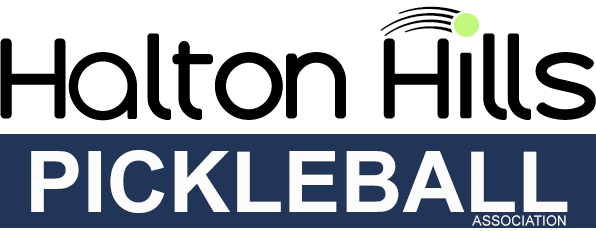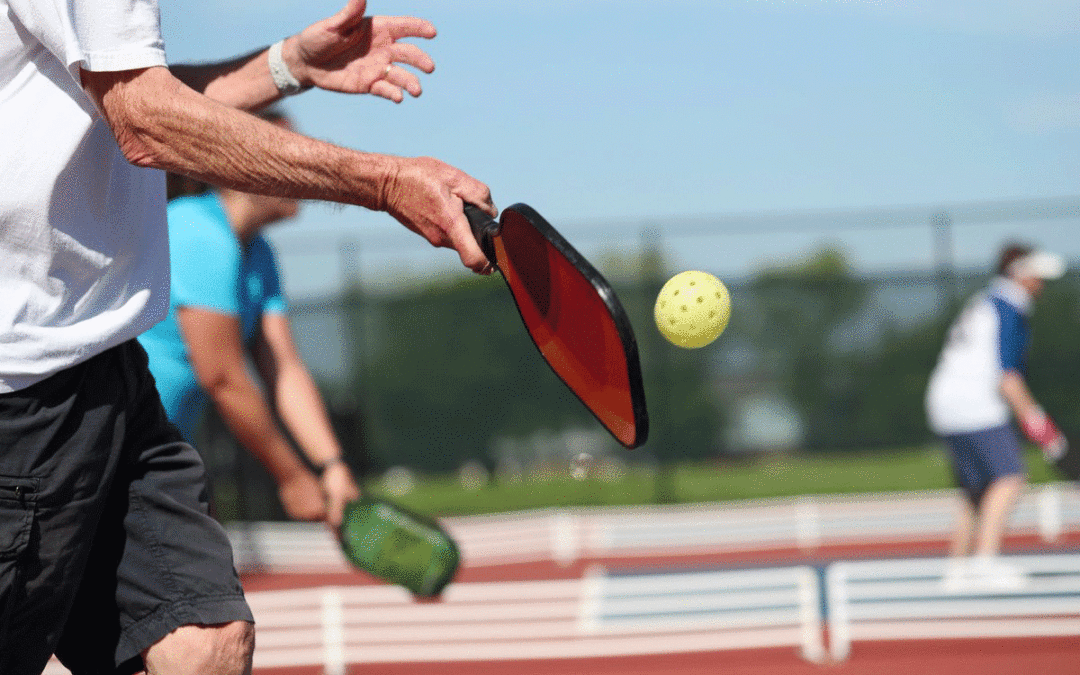As with any new sport, it is important to make sure you are in good health before starting a program of physical activity. If you are managing any medical condition, if you are recovering from an injury, or if you have been sedentary for some time, check with your healthcare provider before starting to play.
NEW TO PICKLEBALL?
It may seem a bit overwhelming getting involved in a new sport, Whether you are a beginner or have played before, If you would like to give Pickleball a try, contact us to find out when and where you can get started.
info@haltonhillspickleball.com
For beginners, Pickleball is a very inexpensive sport and to get started you will require a few items:
Paddle – Many people get interested in Pickleball, run out to find Paddles and choose the least expensive option to start with. DO NOT DO THIS! Instead come out to a lesson or clinic with your local Club or with friends and give it a try, most clubs and players have extra Paddles for you to try out.
As with most equipment, the cheaper Paddles are not very good, and it will cost you more in the long run when you realize you need a better paddle or the handle breaks.
Things to consider when choosing a Paddle are one that feels comfortably by weight, size and handle width.
Shoes – While you can play with regular running shoes, it is a good idea to invest in court shoes. Court shoes are important for comfort and support whether playing indoor or outdoor. It is important that they are court shoes or specifically designed for Pickleball as they will have the rounded edges, to stop tripping and extra support across the bridge.
Eye-wear – While not mandatory, protective eye-wear is a good idea. Pickleball is a fun social game, but accidents do happen. While rare, people get do get hit with the ball while playing a game of Pickleball. it is good to invest in some quality sun glasses or there are several safety frames available for Pickleball.
Contact us today to get started –
info@haltonhillspickleball.com
Playing Pickleball
Before jumping into a game of Pickleball it is a good idea to get familiar with some basics, to help with understanding a few of the quirky rules, like the NVZ (Non-Volley Zone or Kitchen) and the always confusing…….. Scoring!
The video below demonstrates the game nicely in a short time, if you want more details on the various elements of the game the sections below will guide you.
Watch the Video
Serving
Every Pickleball game begins with a serve. Serves follow 3 rules; they must be be made underhand with an upward motion; the ball must be struck below the waist; and the paddle must remain below the wrist. Serves are made diagonally across the court and must clear the Non-Volley Zone (NVZ).
Watch the Video
Return of Serve
The return of serve should be deep to allow time to approach the NVZ before your opponents. The double bounce rule gives the receiver the advantage in Pickleball.
Watch Video
Dinking
Dinking is what defines Pickleball from most other sports. Simply put, a dink is an unattackable ball. Since points are generally won at the net, dinking it a required skill in Pickleball.
Watch Video
3rd Shots
After the serve and return comes the aptly named 3rd shot. The player has 3 choices; lob, drive or drop. The 3rd shot drop is generally accepted as the best choice but is also considered the most difficult shot to master. When executed correctly it creates an unattackable ball and allows players to approach the NVZ.
Watch Video
Ground strokes
Forehand & Backhand strokes are similar to other racquet and paddle sports but since the court is smaller, these shots are generally made without a large back-swing.
Watch Video
Volleys
Hand/Eye co-ordination is an essential skill to advance in Pickleball. Volleys can be fast paced exchanges at the net or can be used to keep you opponents at the back of the court.
Watch Video
Lobs
The lob can be a good weapon in your Pickleball arsenal when used correctly and at the appropriate times.
Watch Video
Overhead Smash
The overhead can be one of the most overwhelming shots in Pickleball as it can produce the fastest and hardest balls coming off the paddle. A good overhead requires good balance and preparation to execute correctly and safely.
Watch Video
Respect The Net
It has been said that you play against 5 opponets in Pickleball. They are your two opponents, the lines, yourself, and the NET. Watch as Dave Weinbach (the Badger) tells you why respecting the net is a basic requirement in Pickleball.
Watch Video
Terminology
- Around-the-post, ATP
- A shot that travels outside the net posts, allowing its trajectory to stay below the height of the net.
- Baseline
- The line at the back of the pickleball court (22 feet from the net).
- Bash
- A hard shot that hits the top of the net (i.e. the tape) and then lands in play on the opponent’s side of the court. A bash is typically unintentional and very difficult to return as the ball changes speed and/or direction due to contact with the net.
- Carry
- Hitting the ball in such a way that it does not bounce away from the paddle but tends to be carried along on the face of the paddle. This is a fault.
- Centerline
- The line bisecting the service courts that extends from the non-volley line to the baseline.
- Crosscourt
- The opponent’s court diagonally opposite a player’s.
- Dink
- A dingle is a soft shot, made with the paddle face open, and hit so that it just clears the net and drops into the non-volley zone.
- Erne
- A volley hit near the net by a player positioned outside the court or in the process of leaping outside the court. A legally executed erne shot allows a player to hit the ball closer to the net without stepping in the non-volley zone.
- Fault
- An infringement of the rules that ends the rally.
- Foot fault
- Stepping on or into the non-volley zone while volleying a ball, or, while serving, failure to keep both feet behind the baseline with at least one foot in contact with the ground or floor when the paddle contacts the ball.
- Half-volley
- A type of hit where the player hits the ball immediately after it has bounced in an almost scoop-like fashion.
- Kitchen
- The non-volley zone which is seven feet from the net on both sides is commonly referred to as “the kitchen”. Players may not enter the kitchen to return a ball unless the ball first bounces.
- Lob
- Hitting the ball in a high arc to the back of the opponent’s court. Ideally designed to clear an opponent who has advanced toward the net.
- Nasty Nelson
- A serve that intentionally hits the non-receiving opposing player closest to the net, rewarding the point to the server.
- Non-volley zone
- A seven-foot area adjacent to the net within which one may not volley the ball. The non-volley zone includes all lines around it. Also called the “kitchen”.
- Poach
- In doubles, to cross over into one’s partner’s area to make a play on the ball.
- Rally
- Hitting the ball back and forth between opposite teams.
- Serve, service
- An underarm lob or drive stroke used to put a ball into play at the beginning of a point.
- Server number
- When playing doubles, either “1” or “2”, depending on whether one is the first or second server for one’s side. This number is appended to the score when it is called, as in “the score is now 4–2, second server”.
- Sideline
- The line at the side of the court denoting in- and out-of-bounds.
- Side-out
- When the serve moves to the opponent’s side.
- Volley
- To hit the ball before it touches the ground and bounces.






